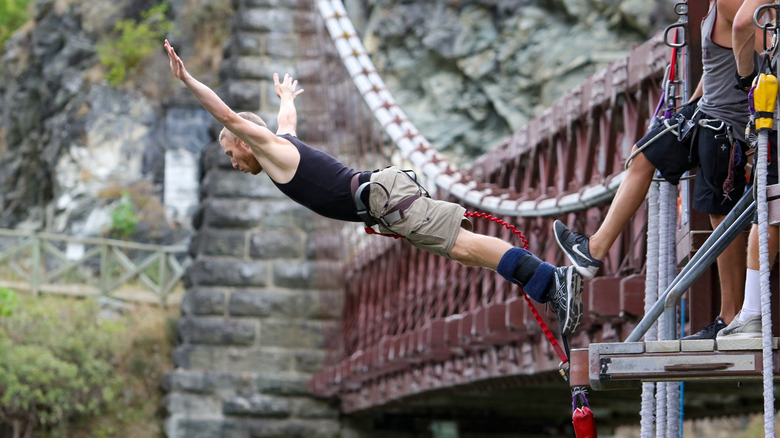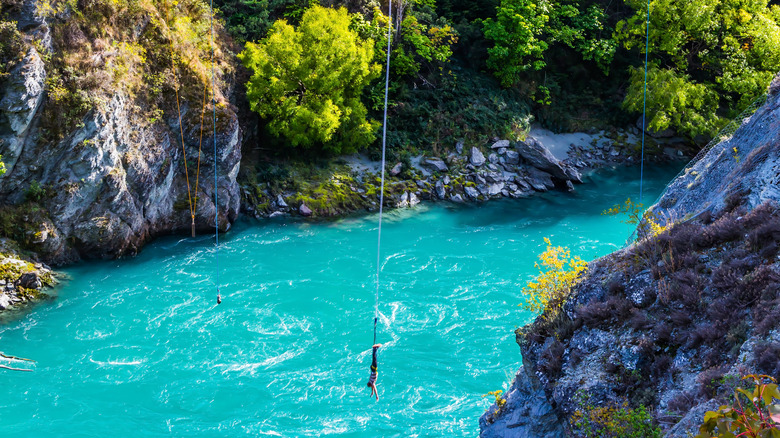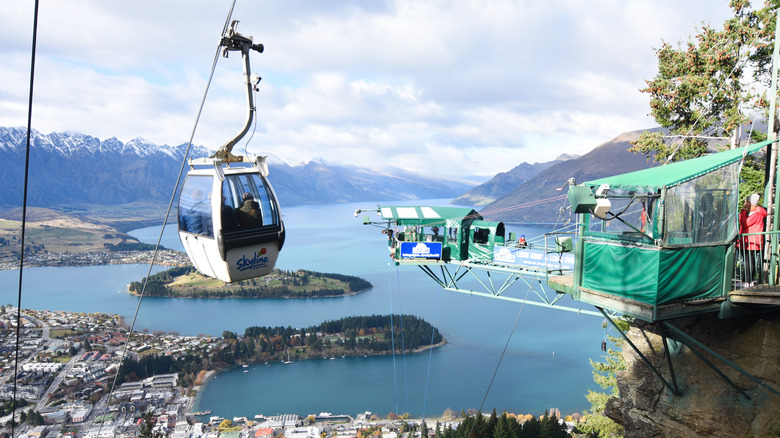Here's Why Bungee Jumping In New Zealand Should Be On Your Bucket List
New Zealand is a land of wonders and treasures, and while the natural sights are truly something to behold, it's the manmade adventures that will give you the thrill of a lifetime. Once you've taken care of airfare and accommodation and all the (yawn) adult stuff, it's time to really dig in and think about what you want to do while in this land of enchantment. One excursion that should be at the very top of anyone's list is bungee jumping. Not only is New Zealand famous for its iconic bungee locations, but it was actually where the first commercial bungee jump company was opened at the Kawarau Bridge according to Just NZ Holidays.
If you're going to trust anyone to keep you safe while you jump off a bridge (or ledge, or platform), it should be the people who brought the adrenaline-pumping sport to the world's attention. With that in mind, your one-stop shop for all things free-falling should be Queenstown on the South Island. In this cozy mountain town known for its impressive activity roster, which encompasses everything from jet boating to mountain biking and a variety of other excursions, you can find not just one but three different bungee locations. If you haven't added this epic pursuit to your bucket list, this might be the time to throw it on there, and here's why.
New Zealand has a wide variety of jumps
The main reason you should save all your bungee needs for New Zealand is their jump variety. New Zealand has gone above and beyond to test the boundaries of excitement and adrenaline, providing visitors and locals alike with an experience unlike any other. Three of arguably the best bungees in the country reside in the same place. Queenstown, which is located on the South Island, plays host to some of the most incredible outings to choose from (in the world, not just NZ). It is also home to the Nevis, Ledge, and Kawarau Bridge bungees.
You might be surprised to learn that you can jump off different and equally thrilling locations, all located within driving distance of one another. The Kawarau Bridge Bungy was the world's first commercial experience, bringing the elation of free-falling to anyone who was brave enough to try it. This whopping 142-foot drop easily offers one of the best views you can get while plummeting toward the raging river below. One selling point of trying bungee jumping is the willpower and confidence it instills — when you finally take the leap, there is nothing like the feeling you get during that fall. You might spend the rest of your life chasing that high, but experiencing it at the world's first bungee is truly invigorating because you feel like a part of something monumental and magical. According to Awe365, your body releases endorphins after the actual jump, creating the sensation of being well and truly alive.
The exhilaration is like nothing else
The Nevis Bungy might be one of the most infamous jumps in the world, due in large part to its exceptionally high drop. The website notes that the bungee gives you an 8.5-second free fall, which might sound short on paper but looks like an eternity when you're standing at the edge before taking the dive. Coming in at 134 meters, the Nevis lets you fall just under 440 feet before you bounce back up. The build-up to the jump is half the fun, with a sprawling canyon that looks even deeper when you finally get strapped in — but overcoming the fear is half the fun.
You still have another option in Queenstown, which is the Ledge Bungy located at the top of Skyline Queenstown. To get there, you can ride the enchanting gondolas that give you incredible views — providing a calm ride before the storm ... er, adventure, that is. There are some smaller hiking trails that lead up the mountain as well, but the official website recommends avoiding using these in winter and to prepare for some steep areas. It is useful to keep in mind that bungees do close if there is inclement weather, high winds, or other dangerous conditions that could compromise a jump, so if bungee is 100% on your New Zealand "to-do" list, it might be worth visiting during spring, summer, or early fall.


